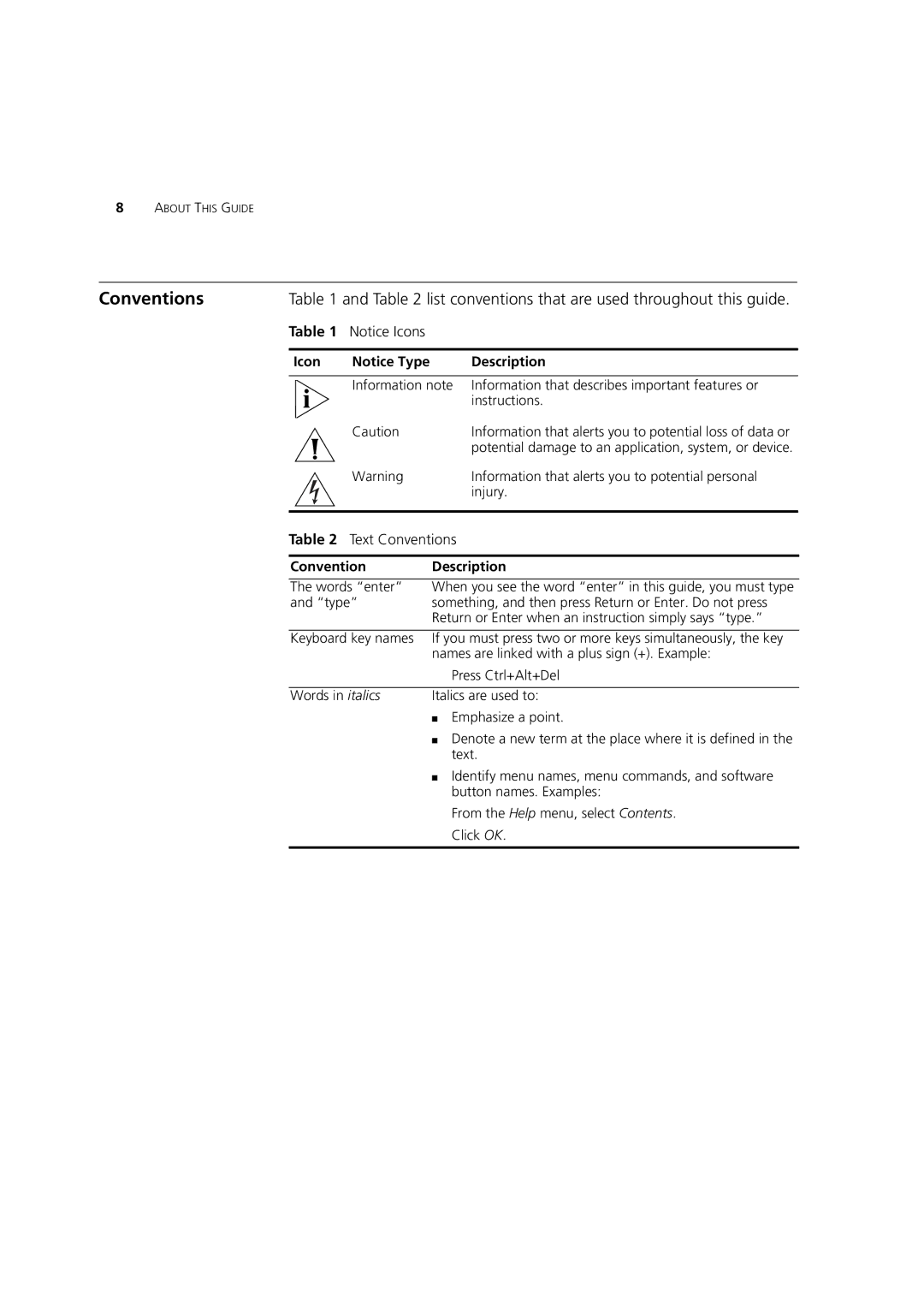
8ABOUT THIS GUIDE
Conventions | Table 1 and Table 2 list conventions that are used throughout this guide. | ||
| Table 1 | Notice Icons |
|
|
|
|
|
| Icon | Notice Type | Description |
|
|
| |
|
| Information note Information that describes important features or | |
|
|
| instructions. |
|
| Caution | Information that alerts you to potential loss of data or |
|
|
| potential damage to an application, system, or device. |
|
| Warning | Information that alerts you to potential personal |
|
|
| injury. |
|
|
| |
| Table 2 | Text Conventions | |
|
|
| |
| Convention | Description | |
|
|
| |
| The words “enter” | When you see the word “enter” in this guide, you must type | |
| and “type” | something, and then press Return or Enter. Do not press | |
|
|
| Return or Enter when an instruction simply says “type.” |
|
|
| |
| Keyboard key names | If you must press two or more keys simultaneously, the key | |
|
|
| names are linked with a plus sign (+). Example: |
|
|
| Press Ctrl+Alt+Del |
|
|
| |
| Words in italics | Italics are used to: | |
|
|
| ■ Emphasize a point. |
■ Denote a new term at the place where it is defined in the text.
■ Identify menu names, menu commands, and software button names. Examples:
From the Help menu, select Contents.
Click OK.
